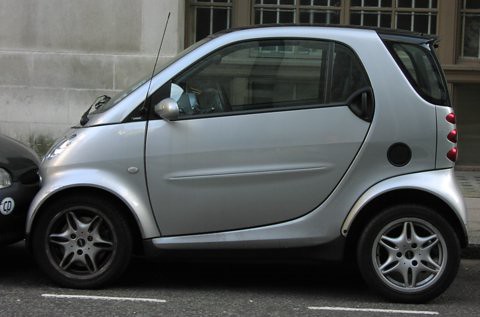1) If only they'd replace that pound symbol with a dollar symbol when listing the cost of items, everything would be reasonably priced. Unfortunately, however, the exchange ratio is a miserable $1.85 US per pound, so everything is expensive. We saw some KitchenAid mixers for around 300 pounds in a department store; they sell for about the same number of dollars back in the US. While basic foodstuffs seem similarly priced to those in the US, restaurant food is relatively expensive. For example, individual-size pizzas at a small restaurant were about $15 each here, much more than the $5-10 we'd expect back in the US.
2) We've been able to buy Cadbury creme eggs in January, which is odd because the only time we're used to seeing them in the US is around Easter, when they're sold as Easter candy. Cadbury also has vending machines in tube stations.
3) We've only shopped at one grocery store (Sainsbury's), but what we've seen of food labeling has been extremely user-friendly. Bags of fruits or vegetables list what types of cooking they're good for (e.g. potatoes list recommended uses of the variety of potato in the bag, be it chipping, mashing, boiling, etc.). Meat and cheese labels are also more informative, with clear information on storage, expiration (both purchase-by and use-by dates), allergy information, suitability for vegetarians, cooking directions, and contents (e.g. sausages list the percent meat included).
4) Nutrition labels are somewhat different than their US counterparts. I haven't seen a wide enough variety of foods to have figured out the entire system, but it appears that each food lists macronutrients contained per 100 grams, which allows a person to determine the fractional composition of the food without a calculator (and once you know the fractional composition of the food, you can easily calculate the nutrient content of any serving size you may be eating). Separate from those data, they have an area displaying the number of calories and grams of fat for a specified amount of the food (which looks like one serving, e.g. 30 grams of cheese, 1 sausage). The labels don't typically list vitamins and minerals (other than salt), though some do. It appears, however, that not all ingredients are required to be listed in the ingredients field, as one type of cheese we bought did not have any type of milk included in the ingredient list (though it did have a milk allergy warning on it).
5) Fat. Ahh, delicious fat. The grocery stores here are so enlightened: they have single cream, whipping cream, thickened double cream ("good for spreading!"), creme fraiche, sour cream, whole-milk yogurt, multiple types of butter, pork fat, beef fat, and goose fat, all ready for the buying. To get all of these in our area of the US would certainly entail going to a specialty store.
6) I never realized how ingrained it was to look left before crossing a street until I came here, where looking left initially does you no good at all. Thankfully they have instructions painted on the ground at most crosswalks telling us dumb Americans which way to look. Even so, my SO and I have been a slave to crossing-meters, which the majority of people here seem to ignore. Most people seem to ignore crosswalks altogether, though since many of the streets are a measly two lanes wide (one in each direction), jaywalking is significantly safer than it is in the US. Even after more than a week, though, I still can't help but look to my right once I'm halfway across the street.
7) I'm very glad I'm not driving, because street signs seem to be lacking at some intersections, and aren't in the same locations as they are in the US (they're typically on buildings, instead of on special poles). My SO and I have already taken one unintentional walking tour of London due to misreading a sign (I still say the Charing Cross Road sign in Trafalgar Square actually points to Strand Street). I'm very glad that my SO's brother has loaned us a copy of A to Z (a popular map book), which has been critical in finding our way around.
8) Cute cars! I've never seen this many cute small cars before, and I've seen only one or two SUVs in the entire time I've been here, which is refreshing. There are also a ton of motorcycles and scooters, which is great since they're some of the most fuel-efficient vehicles around. I used to think the Mini Cooper was my favorite small car, but it now has a very strong contender:

Could it be any cuter?
Even the police cars are adorably small, and some of them are even brightly painted (purples and the like). When the police car sirens echo in the streets, it sounds exactly like the sirens in a Mystery! series on PBS.
9) While the police cars may be cute, the police themselves certainly mean business. I've walked by officers who had submachine guns (or some similar assault weaponry) slung across their chests, which is rather imposing, especially when the officer's index finger is right next to the trigger.



No comments:
Post a Comment